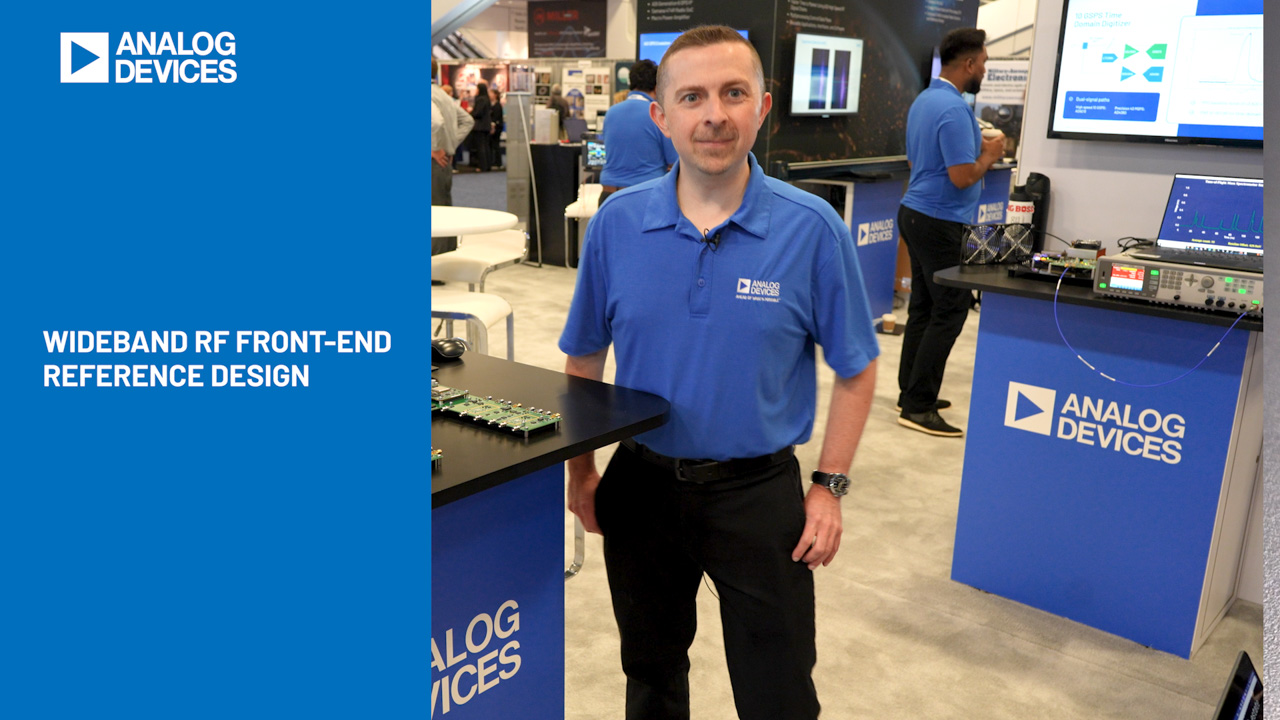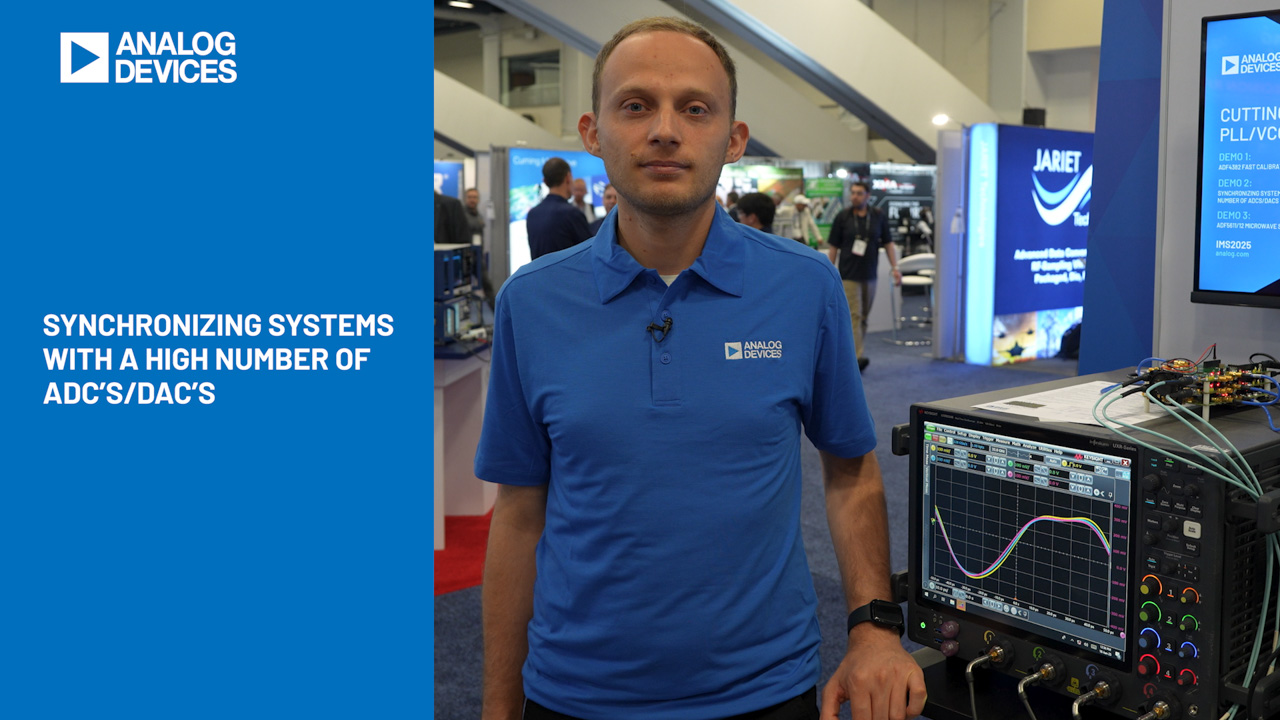优化隔离传感器接口的功率转换
在工业控制世界,有几点是确定无疑的:下一款产品将具有更小的尺寸、更多通道数,每通道的目标成本更低。人们期望,技术在上一个设计产品之后已有所改进,所有这些都是可能的。在很大程度上,过去就是这样发展的,而未来很可能仍然如此。
从光耦合器时代到最新的高速、低功耗、高集成度数字隔离器,数据接口一直在稳步发展。本文将讨论隔离传感器接口的一个本应得到更多关注的方面。如何在缩小接口尺寸并提高性能的同时,将隔离电源提供给ADC和调理电路?过去,模拟接口板的通道数不多,因此板上有足够的空间可用来设计适当的DC-DC转换器,以便为传感器接口提供电源。一个模块只有一两个接口,因此功耗不是什么大问题。而目前,模拟PLC模块(如图1所示)能够提供4个、8个甚至16个独立的隔离通道。多个大小适中的DC-DC转换器会占据很多空间,并产生很多热量。

图1. 典型多通道传感器接口.
图1所示通用模拟接口为电源讨论提供了一个很好的起点。有源电路包括信号调理单元(例如运算放大器或仪表放大器),以及集成了串行接口的ADC,可通过数字隔离器通道实现与FPGA的接口。通常该电路所需功率远低于150 mW。
为传感器接口提供电源的基本挑战是优化电源,使其在所需功率范围内正常工作。0 mW至150 mW工作范围意味着构成电源的控制器和反馈元件的固定静态功耗会占所用总功耗的较大部分,因此效率较低。表1中不同电源配置的静态电流值显示了这一点。另外,许多简单电源设计需要一个最小负载才能正常工作,为使电源正常发挥作用,必须将功率浪费在持续阻性负载上。虽然在电路板上放置一个555定时器和晶体管来获得一定的功率很容易,但制作一个高效、可靠、低功耗的电源则很困难。
在此功率范围内,有三种基本的DC-DC转换器类型:
- 非稳压开关电源或模块
- 稳压开关电源或模块
- 芯片级功率转换器
采用这些电源结构都会增加控制电路的复杂性,而前两种类型还需增加元器件数目和解决方案的尺寸。
非稳压电源
简单的解决方案是图2所示的非稳压DC-DC转换器。

图2. 非稳压DC-DC模块.
该设计利用固定频率、固定占空比输入切换来产生副边电源,然后进行整流和滤波。所选变压器的额定隔离电压必须达到应用要求。隔离要求越高,则变压器越大(即PCB面积越大、高度越高)。该解决方案的成本以变压器为主,数量合适的话,分立解决方案的成本低于1.00美元。
虽然成本很低,但负载和温度范围内的输出电压变化可能很大,模拟接口的模拟器件选择将更加困难。模拟接口的所有模拟器件都必须具有出色的电源抑制性能,负载不能快速变化,否则就会引起电源大幅度改变。因此,器件成本会提高,或者至少要花费更多的设计时间,以评估解决方案在极端情况下的表现。非稳压电源的效率可能相当高,但电源质量很低。
稳压电源和模块
稳压电源提供更好的输出特性。图3显示一个1 W功率范围内的典型DC-DC模块。
与上述非稳压电源示例类似,控制器将功率切换到变压器中。选择适当的变压器功率水平和匝数比,以便在最大负载下提供充足的电压,使得LDO能够将输出电压调节到稳定的水平。该方案的电源效率在高负载下非常好,在低负载下则很差,而后者正是模拟接口应用的运行情况。
有许多有源稳压方案可以提高全负载范围内的效率,但需要复杂得多的控制电路,而且大部分方案需要在隔离栅上建立一个反馈通道。这会大幅增加设计的成本和尺寸,一般不适合此功率范围内的模块。
由于难以将变压器整合到组件中,因此这些电源的集成并未超出密封模块或PCB子卡。制造商在缩小这些器件的尺寸方面取得的成功非常有限。
芯片级转换器
芯片级变压器技术是ADI公司针对iCoupler®数字隔离器产品而开发的,基于该技术已产生一类新型DC-DC转换器。该技术非常适合低功耗高性能电源设计。变压器为“空芯”,也就是说变压器中不存在磁性材料。这意味着,这些微型变压器在大约125 MHz时具有较高的Q。开关频率如此之高,因而无法通过改变开关信号的占空比来控制功率。相反,控制电路通过选通和开关整个振荡器来调节副边电压。
变压器非常小,足以集成到采用内分引脚架构的标准IC封装中。在隔离栅两侧,正向电源和输出反馈所需的全部器件都可以集成到一对芯片中,无需外部分立器件,并且可以实现多种高级特性。芯片级功率转换器能够集成完全稳压DC-DC电源的全部功能,在低负载情况下具有紧凑型的稳压特性和良好的效率。

图4.ADuM5010芯片级转换器.
比较
下面通过一些实际例子来说明上述设计的区别。表1显示两个电源模块和一个芯片级转换器的特性对比。所选TI模块为最常见的模块,功率范围为传感器接口要求中规定的0 mW至150 mW。
| 类型 | 产品型号 | 峰值效率 | 10 mA效率 | 静态电流 | 最大功率 | 负载调整率 | 尺寸 | 成本 |
| 芯片级转换器 | ADuM5010 | 30% | 27% | 6.8 mA | 150 mW | 1.3% | 7.4 × 7.4 × 2 | $1.50 |
| 稳压模块 | DCR010505 | 50% | 21% | 18 mA | 1 W | 3% | 18 × 10 × 2.5 | $5.95 |
| 非稳压模块 | DCH010505 | 72% | N/A | 60 mA | 1 W | 10% | 20 × 8 × 10 | $4.25 |
大部分设计师需要实现高电源效率的设计。表1中,非稳压解决方案的效率较高,但选择该方案也有弊端。此模块的额定功率为1 W,但其数据手册连100 mW以下的性能都未给出。事实很可能是这样:输出电压显著高于额定值,效率迅速降低。
效率第二的是稳压模块。它设计用于轻负载,具有良好的特性。然而,仔细对比芯片级转换器,分析稳压模块的效率,由图5可见,由于芯片级转换器集成有源反馈调节,其效率能够更快地上升至最终值,因此在0 mA和15 mA的负载范围内,芯片级解决方案事实上更有效。这基本上就是最初模拟接口定义中的目标范围了。因此,尽管芯片级解决方案的最大效率较低,它依然是一个较好的选择。

图5. DC-DC稳压模块与芯片级转换器的效率对比.
解决方案尺寸是下一个比较点。模块解决方案在PCB上的面积均为180 mm2,非稳压模块的高度是10 mm,因此它不仅要占用电路板空间,而且很可能是板上最高的部分,决定模块的理论外壳尺寸。明智的选择同样是采用薄型SSOP20 JEDEC标准封装、尺寸为55 mm2,并且添加一些旁路电容和两个电阻的芯片级模块。
稳压方案相对于非稳压方案的优势与模拟前端的ADC和放大器的电源抑制性能有关。稳压能力越强,则选择测量器件的灵活性越大,而不是局限于那些具有较佳电源抑制性能的器件。
模块式/分立解决方案与芯片级解决方案的最后一个区别因素是工作频率。开关电流会给电源带来噪声和纹波。很多情况下,模块的工作频率范围是200 kHz到1 MHz,与许多传感器应用的采样速率相当。必须对数据进行适当的滤波或消除混叠,防止其受到电源噪声影响。芯片级解决方案的原边功率振荡器的工作频率在125 MHz,远高于多数工业传感器ADC的采样频率。虽然功率振荡器的PWM控制仍会引起纹波,但最大噪声源高于ADC的带宽,可将其轻松滤除。
芯片级转换器的额外优势
仅就尺寸效率而言,芯片级转换器非常适合该应用。但该技术还有许多其他优点。下面将详细介绍新型隔离功率转换器ADuM5010。此器件能在模拟接口要求的低功耗范围内提供电信用DC-DC转换器的性能。
- 无限可调的输出电压。ADuM5010通过副边的分压器设置输出电压。其范围为3.15 V至5.5 V。许多模拟ADC和运算放大器采用非标准电源轨供电,因此可以调整电压以获得较佳电源条件。
- 热关断功能可在短路过载情况下保护电源,尤其是在芯片温度可能超过较高限值的高环境温度下。热关断跳变点为154°C,芯片必须比它低10°C以上,器件才能自动重启。电源重启不需要任何外部处理器干预。
- 施加电源时,通过在原边控制PWM实现软启动。这样,器件启动时的浪涌电流可忽略不计。多个器件同时启动时,浪涌电流可能会压倒较弱直流输入电源轨,导致无法预测的行为。
- 利用原边电源禁用功能,可以将转换器关断到功耗极低的待机状态。此特性结合软启动可实现省电方案,在测量间歇关闭传感器的电源。
- 原边输入电源具有欠压闭锁(UVLO)功能。此特性可防止转换器以低输入电源轨启动。这样, 在下游ADuM5010尝试取电之前,输入电源可以有效充电。
- 全面隔离认证。模块的类型测试要求可以降低,并且可以消除生产期间的在线测试。
结论
针对大多数PLC应用设计的模拟传感器接口,应用时需要对数字通信和电源进行隔离。其功率水平非常低,低于大部分DC-DC转换器以高效率和可预测方式正常工作的范围。不过,经过精密调节并表现良好的电源对接口非常有益。隔离式芯片级转换器ADuM5010非常适合隔离模拟输入的要求,功耗150 mW,并提供一般只有高功率DC-DC转换器才具备的特性组合。在功率与隔离数据通道相结合的系列器件中,此器件是仅提供功率的型号。ADuM521x双数据通道器件支持数据接口集成,从而节省更多空间。该系列还将继续推出更高通道数器件,以便工程师只需进行极少的设计工作就能安全且轻松地应用电源。





















